 According to the Radio France, Parviz Tanavoli, an Iranian sculpture has dedicated one of his works, known as “the Lion” to Cecil, with the goal of helping the Animal Protection societies. Cecil was a lion that was killed by an American hunter in a natural preserve parks of Zimbabwe. He was one of the most popular lions known all over the world and his kill created a wave of sorrow and protest from the part of animal lovers. Parviz Tanavoli has said: “The savage slaughter of Cecil in Zimbabwe has broken my heart and I have dedicated one of my latest lion sculptures to commemorate his name in the hope of having contributed to the process of stopping violence towards living creatures”.
According to the Radio France, Parviz Tanavoli, an Iranian sculpture has dedicated one of his works, known as “the Lion” to Cecil, with the goal of helping the Animal Protection societies. Cecil was a lion that was killed by an American hunter in a natural preserve parks of Zimbabwe. He was one of the most popular lions known all over the world and his kill created a wave of sorrow and protest from the part of animal lovers. Parviz Tanavoli has said: “The savage slaughter of Cecil in Zimbabwe has broken my heart and I have dedicated one of my latest lion sculptures to commemorate his name in the hope of having contributed to the process of stopping violence towards living creatures”.
New World Cultural Heritage Approval -Necropolis of Beth She’arim (Israel)
The World Heritage Committee, during it’s 39th session on June 28, 2015-July 8, 2015 approved the inscription of a cultural site in Israel for inclusion on the World Heritage List.
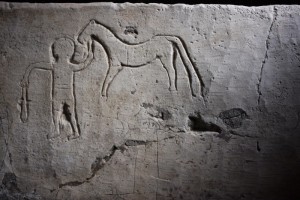 Necropolis of Beth She’arim—a Landmark of Jewish Revival (Israel)– Consisting of a series of catacombs, the necropolis developed from the 2nd century BCE as the primary Jewish burial place outside Jerusalem following the failure of the second Jewish revolt against Roman rule. Located southeast of the city of Haifa, these catacombs are a treasury of artworks and inscriptions in Greek, Aramaic and Hebrew. Beth She’arim bears unique testimony to ancient Judaism under the leadership of Rabbi Judah the Patriarch, who is credited with Jewish renewal after 135 CE.
Necropolis of Beth She’arim—a Landmark of Jewish Revival (Israel)– Consisting of a series of catacombs, the necropolis developed from the 2nd century BCE as the primary Jewish burial place outside Jerusalem following the failure of the second Jewish revolt against Roman rule. Located southeast of the city of Haifa, these catacombs are a treasury of artworks and inscriptions in Greek, Aramaic and Hebrew. Beth She’arim bears unique testimony to ancient Judaism under the leadership of Rabbi Judah the Patriarch, who is credited with Jewish renewal after 135 CE.
New World Cultural Heritage Approval – Speicherstadt and Kontorhaus District (Germany)
The World Heritage Committee, during it’s 39th session on June 28, 2015-July 8, 2015 approved the inscription of a cultural site in Germany for inclusion on the World Heritage List.
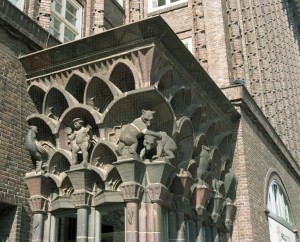 Speicherstadt and Kontorhaus District with Chilehaus (Germany)— Speicherstadt and the adjacent Kontorhaus district are two densely built urban areas in the centre of the port city of Hamburg. Speicherstadt, originally developed on a group of narrow islands in the Elbe River between 1885 and 1927, was partly rebuilt from 1949 to 1967. It is one of the largest coherent historic ensembles of port warehouses in the world (300,000 m2). It includes 15 very large warehouse blocks as well as six ancillary buildings and a connecting network of short canals. Adjacent to the modernist Chilehaus office building, the Kontorhaus district is an area of over five hectares featuring six very large office complexes built from the 1920s to the 1940s to house port-related businesses. The complex exemplifies the effects of the rapid growth in international trade in the late 19th and early 20th centuries.
Speicherstadt and Kontorhaus District with Chilehaus (Germany)— Speicherstadt and the adjacent Kontorhaus district are two densely built urban areas in the centre of the port city of Hamburg. Speicherstadt, originally developed on a group of narrow islands in the Elbe River between 1885 and 1927, was partly rebuilt from 1949 to 1967. It is one of the largest coherent historic ensembles of port warehouses in the world (300,000 m2). It includes 15 very large warehouse blocks as well as six ancillary buildings and a connecting network of short canals. Adjacent to the modernist Chilehaus office building, the Kontorhaus district is an area of over five hectares featuring six very large office complexes built from the 1920s to the 1940s to house port-related businesses. The complex exemplifies the effects of the rapid growth in international trade in the late 19th and early 20th centuries.
New World Cultural Heritage Approval – Rjukan-Notodden (Norway)
The World Heritage Committee, during it’s 39th session on June 28, 2015-July 8, 2015 approved the inscription of a cultural site in Norway for inclusion on the World Heritage List.
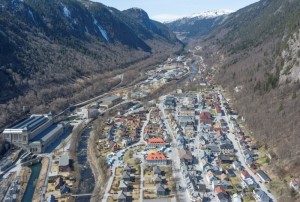 Rjukan-Notodden Industrial Heritage Site (Norway)— Located in a dramatic landscape of mountains, waterfalls and river valleys, the site comprises hydroelectric power plants, transmission lines, factories, transport systems and towns. The complex was established by the Norsk-Hydro Company to manufacture artificial fertilizer from nitrogen in the air. It was built to meet the Western world’s growing demand for agricultural production in the early 20th century. The company towns of Rjukan and Notodden show workers’ accommodation and social institutions linked by rail and ferry to ports where the fertilizer was loaded. The Rjukan-Notodden site manifests an exceptional combination of industrial assets and themes associated to the natural landscape. It stands out as an example of a new global industry in the early 20th century.
Rjukan-Notodden Industrial Heritage Site (Norway)— Located in a dramatic landscape of mountains, waterfalls and river valleys, the site comprises hydroelectric power plants, transmission lines, factories, transport systems and towns. The complex was established by the Norsk-Hydro Company to manufacture artificial fertilizer from nitrogen in the air. It was built to meet the Western world’s growing demand for agricultural production in the early 20th century. The company towns of Rjukan and Notodden show workers’ accommodation and social institutions linked by rail and ferry to ports where the fertilizer was loaded. The Rjukan-Notodden site manifests an exceptional combination of industrial assets and themes associated to the natural landscape. It stands out as an example of a new global industry in the early 20th century.
New World Cultural Heritage Approval – Champagne Hillsides (France)
The World Heritage Committee, during it’s 39th session on June 28, 2015-July 8, 2015 approved the inscription of a second cultural site in France for inclusion on the World Heritage List.
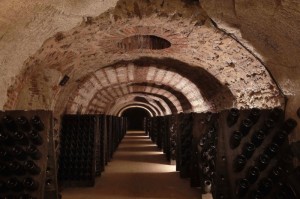 Champagne Hillsides, Houses and Cellars (France)— The property encompasses sites where the method of producing sparkling wines was developed on the principle of secondary fermentation in the bottle since the early 17th century to its early industrialization in the 19th century. The property is made up of three distinct ensembles: the historic vineyards of Hautvilliers, Aÿ and Mareuil-sur-Aÿ, Saint-Nicaise Hill in Reims, and the Avenue de Champagne and Fort Chabrol in Epernay. These three components – the supply basin formed by the historic hillsides, the production sites (with their underground cellars) and the sales and distribution centres (the Champagne Houses) – illustrate the entire champagne production process. The property bears clear testimony to the development of a very specialized artisan activity that has become an agro-industrial enterprise.
Champagne Hillsides, Houses and Cellars (France)— The property encompasses sites where the method of producing sparkling wines was developed on the principle of secondary fermentation in the bottle since the early 17th century to its early industrialization in the 19th century. The property is made up of three distinct ensembles: the historic vineyards of Hautvilliers, Aÿ and Mareuil-sur-Aÿ, Saint-Nicaise Hill in Reims, and the Avenue de Champagne and Fort Chabrol in Epernay. These three components – the supply basin formed by the historic hillsides, the production sites (with their underground cellars) and the sales and distribution centres (the Champagne Houses) – illustrate the entire champagne production process. The property bears clear testimony to the development of a very specialized artisan activity that has become an agro-industrial enterprise.
New World Cultural Heritage Approval – The Climats (France)
The World Heritage Committee, during it’s 39th session on June 28, 2015-July 8, 2015 approved the inscription of a cultural site in France for inclusion on the World Heritage List.
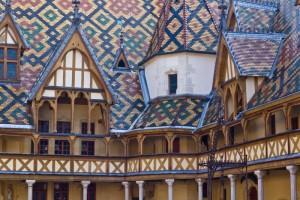 The Climats, terroirs of Burgundy (France) — The climates are precisely delimited vineyard parcels on the slopes of the Côte de Nuits and the Côte de Beaune south of the city of Dijon. They differ from one another due to specific natural conditions (geology and exposure) as well as vine types and have been shaped by human cultivation. Over time they came to be recognized by the wine they produce. This cultural landscape consists of two parts. Firstly, the vineyards and associated production units including villages and the town of Beaune, which together represent the commercial dimension of the production system. The second part includes the historic centre of Dijon, which embodies the political regulatory impetus that gave birth to the climats system. The site is an outstanding example of grape cultivation and wine production developed since the High Middle Ages.
The Climats, terroirs of Burgundy (France) — The climates are precisely delimited vineyard parcels on the slopes of the Côte de Nuits and the Côte de Beaune south of the city of Dijon. They differ from one another due to specific natural conditions (geology and exposure) as well as vine types and have been shaped by human cultivation. Over time they came to be recognized by the wine they produce. This cultural landscape consists of two parts. Firstly, the vineyards and associated production units including villages and the town of Beaune, which together represent the commercial dimension of the production system. The second part includes the historic centre of Dijon, which embodies the political regulatory impetus that gave birth to the climats system. The site is an outstanding example of grape cultivation and wine production developed since the High Middle Ages.
New World Cultural Heritage Approval – North Zealand (Denmark)
The World Heritage Committee, during it’s 39th session on June 28, 2015-July 8, 2015 approved the inscription of a second cultural site in Denmark for inclusion on the World Heritage List.
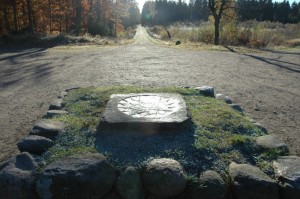 The Par Force Hunting Landscape in North Zealand (Denmark). Located about 30 km northeast of Copenhagen, this cultural landscape encompasses the two hunting forests of Store Dyrehave and Gribskov, as well as the hunting park of Jægersborg Hegn/Jægersborg Dyrehave. This is a designed landscape where Danish kings and their court exercised par force hunting, or hunting with hounds, which reached its peak from the Middle Ages to the end of the 16th century. With hunting lanes laid out in an orthogonal grid pattern, their numbered stone posts, enclosures and hunting lodges, the site demonstrates the application of Baroque landscaping principles to forested areas.
The Par Force Hunting Landscape in North Zealand (Denmark). Located about 30 km northeast of Copenhagen, this cultural landscape encompasses the two hunting forests of Store Dyrehave and Gribskov, as well as the hunting park of Jægersborg Hegn/Jægersborg Dyrehave. This is a designed landscape where Danish kings and their court exercised par force hunting, or hunting with hounds, which reached its peak from the Middle Ages to the end of the 16th century. With hunting lanes laid out in an orthogonal grid pattern, their numbered stone posts, enclosures and hunting lodges, the site demonstrates the application of Baroque landscaping principles to forested areas.
New World Cultural Heritage Approval – Christiansfeld (Denmark)
The World Heritage Committee, during it’s 39th session on June 28, 2015-July 8, 2015 approved the inscription of a cultural site in Denmark for inclusion on the World Heritage List.
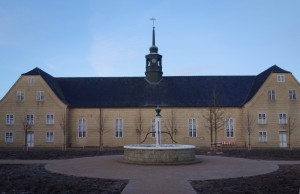 Christiansfeld, a Moravian Church Settlement (Denmark) — Founded in 1773 in South Jutland, the site is an example of a planned settlement of the Moravian Church, a Lutheran free congregation centred in Herrnhut, Saxony. The town was planned to represent the Protestant urban ideal, constructed around a central Church square. The architecture is homogenous and unadorned, with one and two-storey buildings in yellow brick with red tile roofs. The democratic organization of the Moravian Church, with its pioneering egalitarian philosophy, is expressed in its humanistic town planning. The settlement’s plan opens onto agricultural land and includes important buildings for the common welfare such as large communal houses for the congregation’s widows and unmarried men and women. The buildings are still used by an influential community of the Moravian Church.
Christiansfeld, a Moravian Church Settlement (Denmark) — Founded in 1773 in South Jutland, the site is an example of a planned settlement of the Moravian Church, a Lutheran free congregation centred in Herrnhut, Saxony. The town was planned to represent the Protestant urban ideal, constructed around a central Church square. The architecture is homogenous and unadorned, with one and two-storey buildings in yellow brick with red tile roofs. The democratic organization of the Moravian Church, with its pioneering egalitarian philosophy, is expressed in its humanistic town planning. The settlement’s plan opens onto agricultural land and includes important buildings for the common welfare such as large communal houses for the congregation’s widows and unmarried men and women. The buildings are still used by an influential community of the Moravian Church.
New World Cultural Heritage Approval – San Antonio Missions (USA)
The World Heritage Committee, during it’s 39th session on June 28, 2015-July 8, 2015 approved the inscription of a cultural site in USA for inclusion on the World Heritage List.
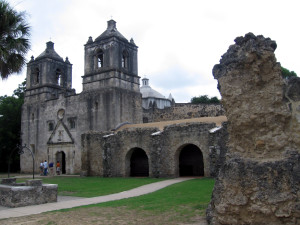 San Antonio Missions (United States of America) — The site encompasses a group of five frontier mission complexes situated along a stretch of the San Antonio River basin in southern Texas, as well as a ranch located 37 kilometres to the south. It includes architectural and archaeological structures, farmlands, residencies, churches and granaries, as well as water distribution systems. The complexes were built by Franciscan missionaries in the 18th century and illustrate the Spanish Crown’s efforts to colonize, evangelize and defend the northern frontier of New Spain. The San Antonio Missions are also an example of the interweaving of Spanish and Coahuiltecan cultures, illustrated by a variety of features, including the decorative elements of churches, which combine Catholic symbols with indigenous designs inspired by nature.
San Antonio Missions (United States of America) — The site encompasses a group of five frontier mission complexes situated along a stretch of the San Antonio River basin in southern Texas, as well as a ranch located 37 kilometres to the south. It includes architectural and archaeological structures, farmlands, residencies, churches and granaries, as well as water distribution systems. The complexes were built by Franciscan missionaries in the 18th century and illustrate the Spanish Crown’s efforts to colonize, evangelize and defend the northern frontier of New Spain. The San Antonio Missions are also an example of the interweaving of Spanish and Coahuiltecan cultures, illustrated by a variety of features, including the decorative elements of churches, which combine Catholic symbols with indigenous designs inspired by nature.
New World Cultural Heritage Approval – Diyarbakir Fortress (Turkey)
The World Heritage Committee, during it’s 39th session on June 28, 2015-July 8, 2015 approved the inscription of a cultural site in Turkey for inclusion on the World Heritage List.
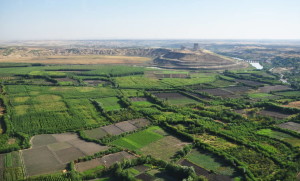 Diyarbakir Fortress and Hevsel Gardens Cultural Landscape (Turkey). Located on an escarpment of the Upper Tigres River Basin that is part of the so-called Fertile Crescentthe fortified city of Diyarbakir and the landscape around has been an important centre since the Hellenistic period, through the Roman, Sassanid, Byzantine, Islamic and Ottoman times to the present. The site encompasses the Amida Mound, known as İçkale (inner castle), the 5.8km-long city walls of Diyarbakir with their numerous towers, gates, buttresses, and 63 inscriptions from different periods, as well as Hevsel Gardens, a green link between the city and the Tigris that supplied the city with food and water.
Diyarbakir Fortress and Hevsel Gardens Cultural Landscape (Turkey). Located on an escarpment of the Upper Tigres River Basin that is part of the so-called Fertile Crescentthe fortified city of Diyarbakir and the landscape around has been an important centre since the Hellenistic period, through the Roman, Sassanid, Byzantine, Islamic and Ottoman times to the present. The site encompasses the Amida Mound, known as İçkale (inner castle), the 5.8km-long city walls of Diyarbakir with their numerous towers, gates, buttresses, and 63 inscriptions from different periods, as well as Hevsel Gardens, a green link between the city and the Tigris that supplied the city with food and water.















